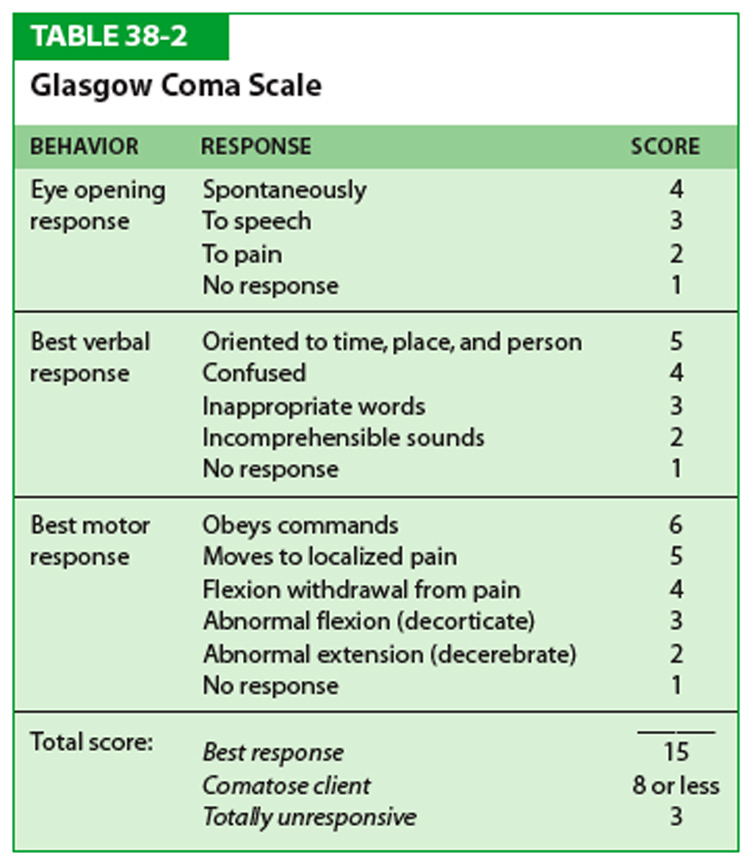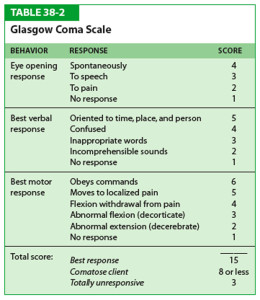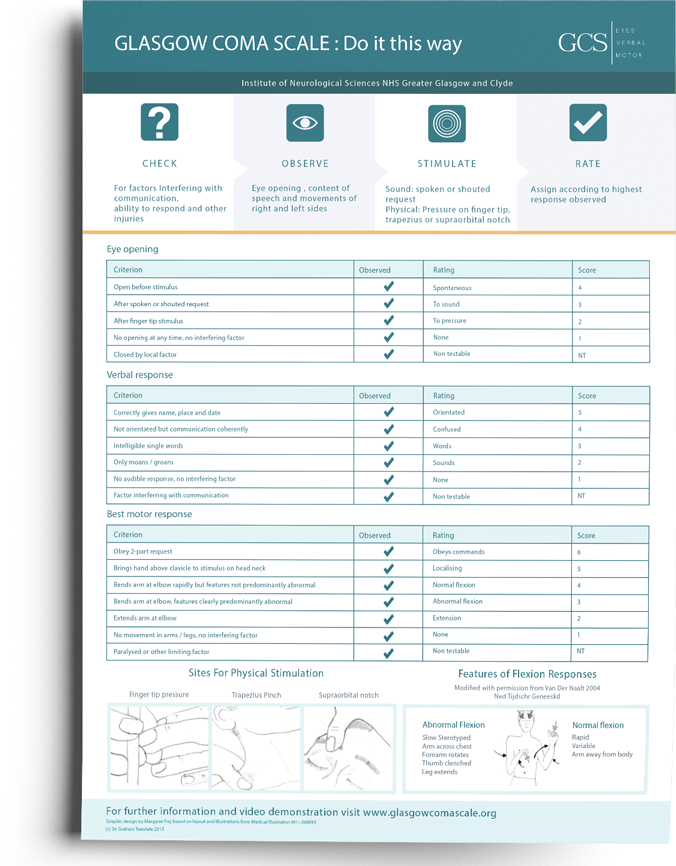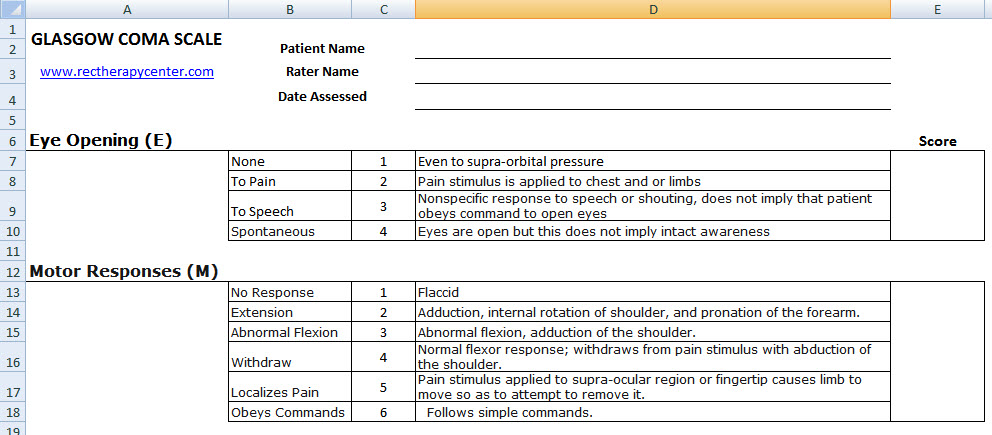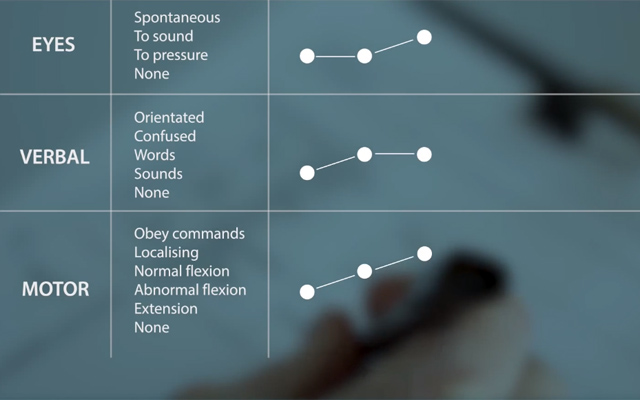Glasgow Coma Scale Printable
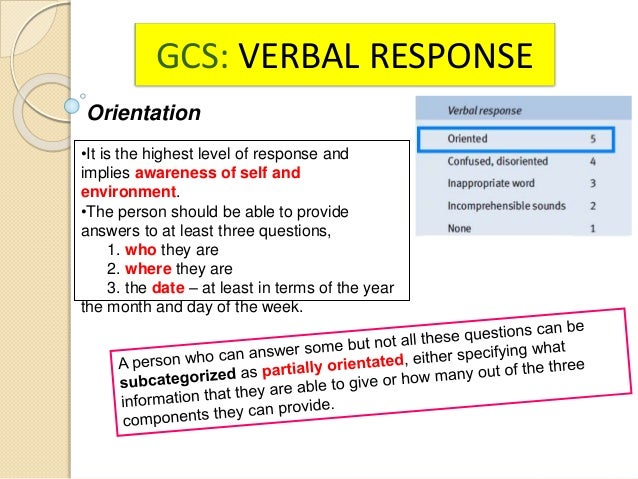
It is also known as gcs which is scored between 3 and evaluate trauma patients neurological status using this glasgow coma scale gcs calculator.
Glasgow coma scale printable. The glasgow coma scale gcs is a tool that healthcare providers use to measure a persons level of consciousness. A patients glasgow coma score gcs should be documented on a coma scale chart. It is most often used when a person has a traumatic brain injury tbi. The glasgow coma scale is an objective method of evaluating a trauma patients neurologic status.
The glasgow coma scale is used to measure the neurological status of patients. A car accident fall or being hit on the head with a hard object can cause a tbi. The glasgow coma scale will incorporate assessment of limb strength and pupillary response to light stimulation. Breaking down the glasgow coma scale.
The glasgow coma scale provides a practical method for assessment of impairment of conscious level in response to defined stimuli. The glasgow coma scale is scored between 3 and 15. Clinicians use this scale to rate the best eye opening response the best verbal response and the best motor response an individual makes. The glasgow coma scale is an integral part of clinical practice and research across the world.
Lets start with what we know. Now unless you want to memorize the whole chart or carry some card around you at all times we have to come up with some ways to make it easier. While the 15 point scale is the predominant one in use this is in fact a modification and is more correctly referred to as the modified glasgow coma scale. The final gcs score or grade is the sum of these numbers.
Glasgow coma scale eye opening response spontaneous open with blinking at baseline 4 points to verbal stimuli command speech 3 points to pain only not applied to face 2 points no response 1 point verbal response. Using the glasgow coma scale. The scale assesses a patients best eye verbal and motor responsiveness. The glasgow coma scale was described in 1974 by graham teasdale and bryan jennett as a way to communicate about the level of consciousness of patients with an acute brain injury.

